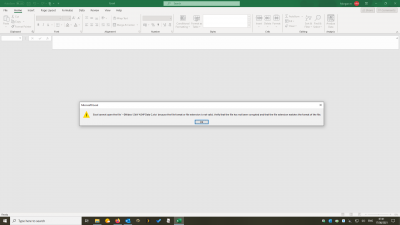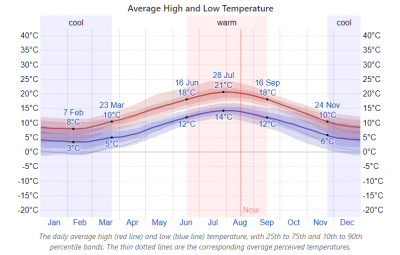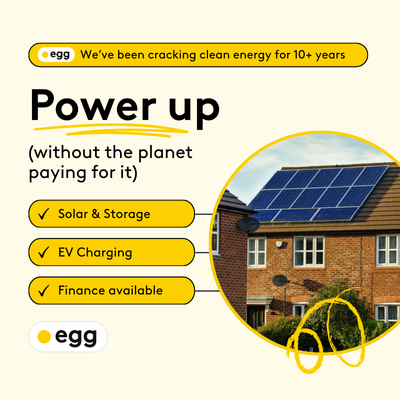@derek-m It is very east to install, plug it in, flick a switch on the board, and it works.
Director at Heacol | Expert Heat Pump Consultant | Book a one-to-one consultation for pre- and post-installation advice, troubleshooting and system optimisation.
Heacol,
I know, though it may be better if you referred to the equipment as a Wireless Remote Controller and Wireless Receiver, rather than a thermostat which may be confusing.
So.....................me looking at those drawings is a bit like me trying to translate Greek to English 😆
But in basic terms I need to ask why the installer has gone with his preference, insist he install via the preference outlined above or go with his install and change it myself after install. When I say 'myself' I of course mean 'somebody' given that even the drawings are beyond my comprehension.
Really appreciate the help guys. I suspect others will benefit from this conversation too.
Retrofitted 11.2kw Mitsubishi Ecodan to new radiators commissioned November 2021.
14 x 500w Monocrystalline solar panels.
2 ESS Smile G3 10.1 batteries.
ESS Smile G3 5kw inverter.
Hi Morgan,
That's okay. You don't need to understand the drawings, that's what you pay your installer to do.
Being an old cynic, I suspect that your installer has recommended a thermostat, because most people are familiar with thermostats, but people may start to panic if the word controller is mentioned. Also fitting a thermostat would probably require less configuring and commissioning of the system, so hence more profit. At the end of the day your installer wants to provide you with a system that works, but is not particularly interested in how efficiently it performs.
I would certainly be interested to hear why your installer decided upon a thermostat, rather than a controller. At the end of the day it is your decision as to whether to have a thermostat or a controller, but if you should need help in optimising it's operation, we can probably use skype or facetime to iron out any issues.
At the moment I am carrying out some calculations and number crunching on operational data provided by the manufacturer of Batalto's system. I am investigating how variations in ambient air temperature, and water flow temperature, affect the operating efficiency of an ASHP system, to find the 'sweet spot' which gives maximum efficiency.
@derek-m I await the details of the full tech survey carried out last Tuesday. When I have that I will ask the question re the thermostat v controller and go from there.
Retrofitted 11.2kw Mitsubishi Ecodan to new radiators commissioned November 2021.
14 x 500w Monocrystalline solar panels.
2 ESS Smile G3 10.1 batteries.
ESS Smile G3 5kw inverter.
@derek-m that's amazing. Thank you! As an FYI I already copied most of that COP and temperature data into Excel, if that helps?
Hi Batalto,
The manufacturer's data you supplied is highly useful. I have already copied the data for the 12kW ASHP into a spreadsheet and have been making some quite revealing calculations, the findings from which I will be posting in the near future.
If you have copied data for other sized units into a spreadsheet I would much appreciate a copy.
Many thanks.
Hi Everyone,
I have been analysing the detailed manufacture's data for a 12kW ASHP, kindly provided by Batalto, with the following preliminary findings. The first thing that I noticed is that although the data is for a nominal 12kW ASHP, the maximum capacity at -15C outdoor air temperature is only 8857W at a Leaving Water Temperature (LWT) of 30C, and this falls to only 5865W at an LWT of 60C. Conversely, at 15C outdoor air temperature the maximum capacity is 14361W and 12291W respectively. It is therefore necessary to specify an ASHP that is at least 1.5 times the required heat demand of a given property.
As expected, the data clearly shows a reduction of ASHP efficiency at lower outdoor air temperatures, indicating an estimated COP of 2.05 at -10C against a COP of 3.69 at 10C, when operating with a LWT of 45C. Both these values were with the ASHP operating at maximum capacity. (Just over 44% less efficient) Whilst not totally unexpected, I noticed with interest that the COP under both operating conditions was slightly higher 2.15 and 4.16 respectively when the ASHP was operating at minimum capacity. (Just over 48% less efficient). It therefore would appear that as the ASHP works harder, it's efficiency is reduced slightly.
Whilst the reduction in efficiency -10C to 10C is slightly greater (50% and 52%) at a water flow temperature of 30C, the actual COP values are vastly different. At an outdoor temperature of -10C, the COP value at 30C LWT, maximum capacity, is 2.74, at 45C LWT it is 2.05 (25% reduction) and at 60C LWT it is 1.3 (52.5% reduction). Whilst at an outdoor temperature of 10C, the COP value at 30C LWT, maximum capacity, is 5.49, at 45C LWT it is 3.69 (32.8% reduction) and at 60C LWT it is 2.65 (51.7% reduction).
To obtain the most efficient operation from an ASHP it is therefore necessary to run it consistently at the lowest possible LWT, along with the lowest acceptable capacity and during the highest outdoor air temperature.
Problem 1. We cannot easily change the outdoor air temperature, without additional equipment to capture and store heat energy for use when the outside air temperature is lowest. So it would undoubtedly be beneficial to use the ASHP to produce more energy when the outside air temperature is highest during the day. Warm your home a little extra (higher temp) during the daytime. Drop the desired temperature slightly at night.
Problem 2. Running your ASHP with a LWT of 30C may be possible from Spring through to Autumn, but I doubt it will be achievable during the Winter months. As heacol has suggested TRV's should be removed, or possibly a better option would be to just set them to a temperature 1C above the desired temperature. That way they will help limit any temperature rise due to solar gain or human activity. Wherever possible all heat emitters (Radiators, UFH) should be fully operational, to maximise their heat output and therefore allow the ASHP to be operated at the lowest LWT at all times. I have some further suggestions which I will explore in greater depth in another post.
A further method to reduce the LWT, would be to improve insulation.
I have attached an Excel Spreadsheet to which I have added some columns. The calculated values are shown in BOLD text or the cells are highlighted, as detailed below.
On line 1: Heat Demand and Indoor Temp. - These are values for the user to change, the Heat Demand being that calculated for an indoor temperature of 21C at an outside air temperature of -3.3C. Both can be varied by the user to see the effect changes have on the data in BOLD text.
Heat Demand column: This is the calculated heat demand at the specified outdoor air temperatures.
COP / PI column: The upper BOLD value is the estimated COP values under the different operating conditions. PI is the estimated Power Input values under the various operating conditions. These values are highlighted as follows:-
Red - Indicates that the ASHP has reached it's maximum operating capacity and cannot meet the heat demand.
Green - Indicates that the ASHP would operate continuously within it's normal operating range and would be able to meet the heat demand.
Yellow - Indicates that the heat demand is lower than the minimum operating capacity of the ASHP. The pump would therefore need to cycle to satisfy the heat demand.
I hope that the above makes sense, but please feel free to ask questions.
Retrofitted 11.2kw Mitsubishi Ecodan to new radiators commissioned November 2021.
14 x 500w Monocrystalline solar panels.
2 ESS Smile G3 10.1 batteries.
ESS Smile G3 5kw inverter.
@derek-m there is definitely some kind of issue with the file - wont open for me either
As an FYI this is the temperature range where I live - as you can see we are mild pretty much the whole year, with the odd cold day. The coldest points are always at night (as you would expect)
- 26 Forums
- 2,104 Topics
- 46.3 K Posts
- 142 Online
- 3,393 Members
Join Us!
Latest Posts
-
RE: Ecodan consuming 100kwh per day in new build!!!
The information in this site is very helpful when consi...
By skyefarmer , 26 minutes ago
-

RE: Who's your electricity provider and what's your tariff?
@old_scientist I found the switching between tariff jus...
By Toodles , 11 hours ago
-
RE: Plug and play solar. Thoughts?
Have a read of my previous posts on so-called Balcony S...
By Lucia , 14 hours ago
-
@editor @bart Hi, I can see a few problems with your in...
By Brendon Uys , 17 hours ago
-
RE: Compressor attempts start but fails - Nibe Fighter 2005 8kW
"To tell you the truth, I don't know if HAL is homicida...
By Scalextrix , 19 hours ago
-
RE: Location of hot water isolation valve on cylinder
@rossowheels if you isolate the water supply in it will...
By ASHP-BOBBA , 1 day ago
-

The Importance of Radiator Balancing for Efficient Heating: Introducing the Flow Regulating Valve
It’s fascinating to watch how low-temperature heating i...
By Mars , 2 days ago
-

RE: Servicing Hitachi HP in rural Somerset
I'd give GreenGenUK a call or email them: sales@greenge...
By Mars , 2 days ago
-
RE: Heating coming on when not required
I played with a max heating temp but there is a world o...
By JamesPa , 2 days ago
-
RE: Pressure drop Primary circuit
I've always regarded topping up heating systems as my j...
By JamesPa , 2 days ago
-
RE: Heat pump solutions and/or installer recommendations for France
I’d travel to France for work if you were struggling wi...
By Damon Blakemore , 3 days ago
-

RE: 5 Star Service from Havenwise
That's always a danger with any new good idea, @morgan....
By Majordennisbloodnok , 3 days ago
-

Have your say in the Renewable Heating Hub Awards
It’s time to celebrate the best (and call out the worst...
By Mars , 3 days ago
-

-

RE: Mitsubishi cycling while on chilled water output
@iaack yes there's no denying that cold air sinks! I s...
By downfield , 4 days ago
-

RE: Weather compensated secondary circuits with Biomass
@andycoo that flooring sounds ideal. Extra volume is ...
By Sune , 4 days ago






